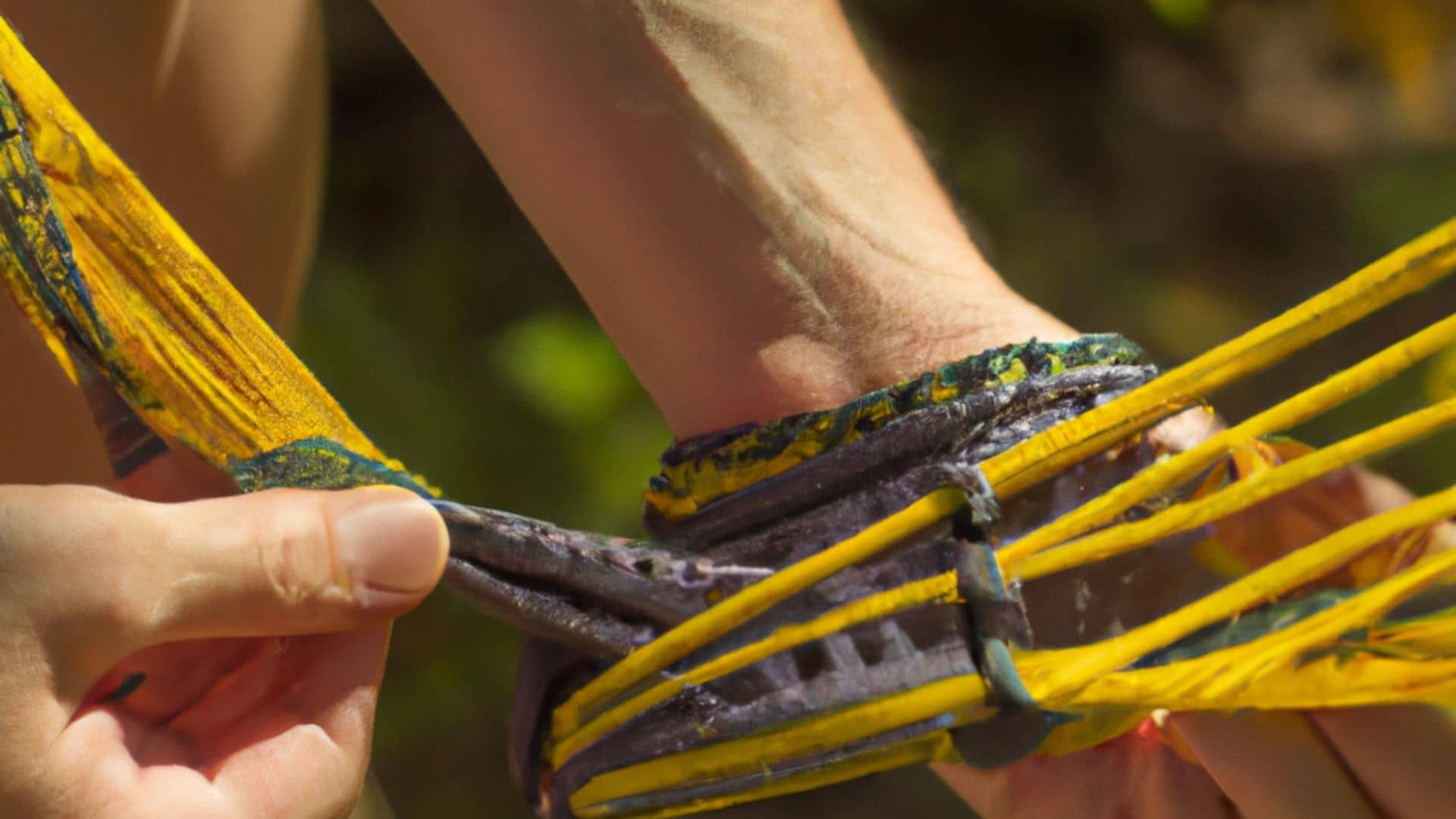When it comes to hanging a hammock, one of the most critical decisions you’ll make is choosing the right suspension system. While ropes have traditionally been the go-to for hanging hammocks, hammock straps have become increasingly popular in recent years. Each system has its pros and cons, and choosing the right one can make all the difference in your comfort and safety. In this article, we’ll explore the differences between hammock straps and ropes, weighing the advantages and disadvantages of each to help you make an informed decision about which is best for your hammock setup.
tree straps or paracord ?? 2 different ways to setup your hammock but what do you use ??
Do You Need Hammock Straps?
If you’re planning on hanging your hammock from trees, then you’ll need a set of hammock straps. Hammock straps make it easy to secure your hammock to trees without damaging the bark. They also provide a comfortable and stable way to relax in your hammock.
Hammock straps typically come in sets of two, and each strap is about 10 feet long. You’ll need to wrap each strap around the trunk of the tree and then thread the ends through the loops on your hammock. Once both straps are in place, you can adjust the tension to create a tight or loose fit, depending on your preferences.
If you’re not planning on hanging your hammock from trees, then you don’t need hammock straps. There are other ways to secure your hammock, such as attaching it to walls or posts. However, if you do plan on hanging your hammock outdoors, then Hammock Straps are essential for a safe and comfortable experience.
What Straps are Good for Hammocks?
When it comes to hammocks, there are a variety of straps available on the market to choose from. However, not all straps are created equal and some are better than others when it comes to stability and support. Here is a look at some of the best straps for hammocks to help you make an informed decision when purchasing one for your own needs.
Polyester Straps Polyester straps are among the most popular type of hammock straps available. They are often chosen for their durability and weather resistance. Polyester is also a relatively inexpensive material, which makes these types of straps a budget-friendly option. When shopping for polyester straps, be sure to look for those that have reinforced stitching at the points where they will be attached to your hammock. This will help ensure that they can handle the weight of your body without breaking or stretching over time.
Nylon Straps If you’re looking for something even more durable than polyester, nylon is an excellent choice. These types of straps are often used in commercial settings such as parks and campgrounds because they can withstand a lot of wear and tear. Nylon is also very strong, so it’s able to support heavier weights than polyester without breaking or stretching. However, keep in mind that nylon is not as weather resistant as polyester, so if you’ll be using your hammock outdoors, you may want to consider another material like polypropylene instead. Polypropylene Straps
If weather resistance is important to you, then polypropylene could be the right material for your needs. These types of straps are similar to nylon in terms of strength and durability but they’re also UV resistant and won’t mildew or mold if they get wet.
Read also: Tying Hammock Straps: A How-To Guide
What Rope is Best for Hanging a Hammock?
When it comes to finding the perfect rope for hanging a hammock, there are a few things you need to take into account.
The first is the weight capacity of the rope. You’ll want to make sure that the rope can support the weight of both you and your hammock.
The second is the length. You’ll need to find a rope that’s long enough to reach from one anchor point to another. And finally, you’ll want to consider the material. Some ropes are made from natural fibers like cotton or jute, while others are synthetic materials like nylon or polyester.
So, what’s the best rope for hanging a hammock? Ultimately, it depends on your individual needs and preferences.
If you’re looking for a strong and durable option, nylon or polyester ropes are a good choice. If you’re concerned about weight capacity, go with a thicker rope. And if you want an eco-friendly option, look for ropes made from natural fibers like cotton or jute.
Can I Hang a Hammock With Rope?
Yes, you can hang a hammock with rope. There are a few different ways to do this, and the best method will depend on what kind of hammock you have and what kind of setup you’re working with. If you have a hammock that already has loops or eyelets for attaching ropes, then simply tie the rope to each loop or eyelet.
If your hammock doesn’t have any built-in attachment points, you can create your own by tying knots in the fabric at either end of the hammock. Once you’ve got your ropes attached, all you need to do is find two sturdy anchor points (trees, posts, etc.) and tie the ropes off. Make sure the knots are secure and double-check that everything is nice and tight before getting in your hammock – you don’t want it coming undone while you’re relaxing!
Conclusion
In conclusion, the choice between hammock straps and ropes depends on your specific needs and preferences. While ropes are a traditional and affordable option, hammock straps offer more adjustability, ease of use, and tree-friendliness. Straps are also less likely to cause damage to trees, making them an environmentally responsible choice. However, both options can be safe and effective when used correctly, and the decision ultimately comes down to personal preference. Whatever your choice may be, be sure to follow the manufacturer’s instructions and use your suspension system responsibly to ensure a comfortable, safe, and enjoyable hammock experience.
Our latest posts

